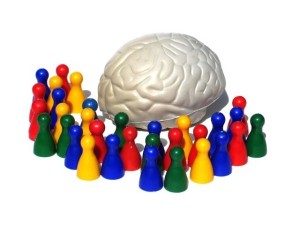Underactive and depressed patients are a common but serious primary  condition that brings such individuals to the emergency department or any health care facility for that matter. This overlapping set of conditions is often masked by anxiety and somatic complaints. A depressed individual can experience varying degrees and changes in mood and behavior.
condition that brings such individuals to the emergency department or any health care facility for that matter. This overlapping set of conditions is often masked by anxiety and somatic complaints. A depressed individual can experience varying degrees and changes in mood and behavior.
Clinical manifestations of underactive and depressed patients may often include apathy, sadness, feelings of unworthiness or worthlessness, suicidal thoughts, self blame, desire to escape, avoidance of simple problems, anorexia and weight loss, decreased interest in sex, sleeplessness or insomnia and ceaseless activity or disinterest in activities of daily living. Moreover, the agitated depressed patient may also exhibit motor restlessness and severe anxiety.
Holistic approach in caring for underactive and depressed patients
The underactive and depressed patient can greatly benefit from ventilating personal feelings and therefore should be given every opportunity to express his or her feelings especially regarding his or her personal problems, disappointments and frustrations that incapacitates their effective coping mechanisms.
The emergency department staff should be calm and approachable and must elicit a desire to communicate with the depressed individual as properly manifested with the care provider’s choice of words and more importantly overt and covert actions so that the depressed individual can feel comfortable with the situation he/she is in. The health care provider should provide the patient with ample opportunity to converse and gather his/her thoughts in a calm and unhurried manner. Furthermore, it is vital that information on a perceived or real illness or sudden worsening of the depression is an important clue which can be effectively assessed upon an establishment of proper rapport between patient and health care provider.
Risk for suicide in underactive and depressed patients
Underactive and depressed patients are at high risk of committing suicide. Attempts should be intensified in order to identify whether an individual has contemplated thoughts about attempting suicide as a remedy to his/her situation. Questions like “Have you ever thought of taking your own life?” may be an important assessment question to help start a conversation and open a line of communication in the discussion of such sensitive topic which the individual might be inhibited in initiating. Generally, with this approach the high risk individual is relieved to have been given an opportunity to discuss personal feelings. If the individual is seriously depressed, family members should be notified and must never be left alone since the act of suicide is normally done in solitude.
Advocating and supporting underactive and depressed patients
The individual needs to understand that depression is treatable. Antidepressant and anti-anxiety medications can be prescribed by psychiatric physicians in order to correct the instability in neuron activities caused by the depression. Moreover, crisis and supportive services in the community including mental health centers, telephone counseling and referral, suicide prevention centers, group therapy, marriage and family counseling should be offered to the individual and family so that they will know that there are plenty of support care facilities other than the emergency department that can help the individual cope with his/her depressive episode. Usually, underactive and depressed patients are referred for psychiatric consultation and evaluation to a psychiatric facility for extreme cases of depression.